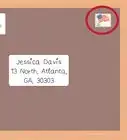This article was co-authored by Tami Claytor. Tami Claytor is an Etiquette Coach, Image Consultant, and the Owner of Always Appropriate Image and Etiquette Consulting in New York, New York. With over 20 years of experience, Tami specializes in teaching etiquette classes to individuals, students, companies, and community organizations. Tami has spent decades studying cultures through her extensive travels across five continents and has created cultural diversity workshops to promote social justice and cross-cultural awareness. She holds a BA in Economics with a concentration in International Relations from Clark University. Tami studied at the Ophelia DeVore School of Charm and the Fashion Institute of Technology, where she earned her Image Consultant Certification.
This article has been viewed 3,922,920 times.
Addressing an envelope correctly helps get your letter to the correct destination on time. Many people don't realize that there's a "right" way to address an envelope; if it arrives at the right place, you did it correctly... right? Unfortunately, this is not the case. If you're writing an address on an envelope to a business contact, it's especially important to write it correctly so that you are professional. This is a skill that you'll likely use time and time again for work, so you'll want to do it correctly.
Steps
Sample Envelope Template
Personal Letter (United States)
-
1Write the name of the recipient on the first line. The first line should contain the name of the person who will be receiving the letter. How you write the name depends on how they like to be addressed. If, for instance, you know your aunt prefers a certain level of anonymity, you could simply list her as "P. Jones," instead of "Polly Jones."
- Include any necessary titles. You can probably skip titles for close friends and family members, but you might consider including them for government officials, military personnel, doctors, professors, or elderly people. For instance, if you were addressing a letter to your elderly aunt Polly who was widowed many years ago, you might call her "Mrs. Polly Jones."
-
2Place the letter in the care of someone else (optional). If you're sending someone a letter to an address where that person does not regularly reside, it might be wise to include a "care of" or "courtesy of" line below the name.
- Write "c/o" before the name of the person who does live there, the hotel, the hostel, etc.
- For instance, if your aunt Polly is staying with a cousin for a few weeks and you're sending her a letter there, you might write "c/o Henry Roth" below her name.
Advertisement -
3Write the street address or post office box number on the second line. If you're writing a street address, be sure to include any directional notation (such as "400 West" instead of simply "400") or apartment numbers. If the street address and apartment number are so long that they don't fit on one line, just write the apartment number on the line below the street address.
- For example, if your friend lives on 50 Oakland Avenue in apartment #206, write, "50 Oakland Ave, #206."
- You can use some abbreviations for the type of street it is, as long as you use them correctly. You can write blvd instead of boulevard, ctr instead of center, ct instead of court, dr instead of drive, ln instead of lane and so on.[1]
- If you're addressing a letter using a PO box, there's no need to include the street address of the post office. Based on the ZIP code, the postal service will know where the PO box is.
-
4Write the city, state, and ZIP code on the third line. The state should be abbreviated with two letters, not spelled out.
- You can use a 9-digit ZIP code, though you don't have to. Five digits should be enough.
-
5If you're mailing from another country, write "United States" on the address. If you're sending a letter from outside the US, you'll need to change your format slightly. Write the city and state on one line, "United States of America" on the line beneath that, and the ZIP code on the last line.
-
6Finished.
Professional Letter (United States)
-
1Write the name of the recipient. This could be a person or an organization, depending on where your letter is going. If possible, try to name a person as the recipient instead of listing an entire organization — your letter is more likely to get someone's attention that way. Make sure to use formal titles, such as "Mr.," "Ms.," "Dr.," or whatever the person's title may be.
- Write the recipient's position after their name (optional). For instance, if you're writing the director of marketing, you might say "Paul Smith, Director of Marketing" on the first line.
- Write "Attn:" followed by the person's name if the person occupies a single desk or office at an address, if you like. For example: "Attn: Shirley Shatten." If you're submitting your work to a journal and do not know who the fiction editor is, write, "Attn: Fiction Editor" to make sure your submission ends up in the right place.
-
2Write the name of the organization on the second line. For instance, if you're writing to Paul Smith about a business matter and he works for Widgets, Inc., you'd write "Paul Smith" on the first line and "Widgets, Inc." on the second.
-
3Write the street address or post office box number on the third line. If you're writing a street address, be sure to include any directional notation (such as "400 West" instead of simply "400") or suite numbers.
- If you're addressing a letter using a PO box, there's no need to include the street address of the post office. Based on the ZIP code, the postal service will know where the PO box is.
-
4Write the city, state, and ZIP code on the third line. The state should be abbreviated with two letters instead of spelled out.[2]
- You can use a 9-digit ZIP code, though you don't have to. Five digits should be enough.
-
5Finished.
United Kingdom
-
1Write the name of the recipient on the first line. Include any necessary titles. You can probably skip titles for close friends and family members, but you might consider including them for government officials, military personnel, doctors, professors, or elderly people. This could be a person or an organization.
-
2Write the address number and name of the street on the second line. It's important that you write the number first and the street second. For example: 10 Downing St.
-
3Name the town or city on the third line. For example: London.
-
4Write the name of the county on the fourth line (if applicable). If, for instance, you're sending a letter to London, you probably don't need to write the county. But if you're sending a letter to a rural area, including it might be a good idea. If you know any other principal subdivisions, such as the province, state, or county, then include that as well.[3]
-
5Write the postal code on the last line. For example: SWIA 2AA.
-
6Include the name of the country (if applicable). If you're posting the letter from outside of Great Britain, write "UK" or "United Kingdom" on the last line.
-
7Finished.
Ireland
-
1Write the name of the recipient on the first line. This could be a person or an organization. Include any necessary titles. You can probably skip titles for close friends and family members, but you might consider including them for government officials, military personnel, doctors, professors or elderly people.
-
2Write the name of the house on the second line (if applicable). This is especially relevant in rural areas where houses or estates are known by name instead of by address. For example, you could write Trinity College Dublin.
-
3Write the street on the third line. You can include the street number if you only have the street address. If you know the name of the estate, though, the street name alone should be enough. For example, College Green.
-
4Write the name of the town or city on the fourth line. If you're sending a letter to Dublin, you'll need to follow the city name with a specific one- or two-digit postal code for that area of the city. You could write, Dublin 2.
-
5Write the name of the county on the fifth line (if applicable). If you're sending a letter to a major city like Dublin, you probably don't need the county. If you're mailing to a rural area, though, you do.
- Note that in Ireland, the word "county" comes before the name, and is abbreviated "Co." So, for example, if you're sending a letter to County Cork, you'd write "Co. Cork" on the envelope.
-
6Write the name of the country (if applicable). If you're mailing something to Ireland from outside of the country, write "Ireland" on the last line.
-
7Finished.
France
-
1Write the name of the recipient on the first line. Note that it is common to write a person's last name in all caps in France — for example, "Mme. Marie-Louise BONAPARTE." Include any necessary titles. You can probably skip titles for close friends and family members, but you might consider including them for government officials, military personnel, doctors, professors or elderly people.
-
2Write the name of the house or estate on the second line. This is especially relevant in rural areas where houses or estates are known by name. You could write, for example, Chateau de Versailles.
-
3Write the street number and name on the third line. The street name should be in all caps. For example, you might write "1 ROUTE de ST-CYR."
-
4Write the postal code and city name on the fourth line. For example, 78000 Versailles.
-
5Write the country name on the fifth line (if applicable). If you're mailing between countries, include "France" on the last line.
-
6Finished.
Most of Europe
-
1Write the name of the recipient on the first line. This could be a person or an organization.
- Include any necessary titles. You can probably skip titles for close friends and family members, but you might consider including them for government officials, military personnel, doctors, professors or elderly people.
-
2Write the name of the house on the second line (if applicable). This is especially relevant in rural areas where houses or estates are known by name instead of by address.
-
3Write the street name and number on the third line. For example, you might write "Neuschwansteinstraße 20."
-
4Write the postal code, city and initials of the province (if applicable) on the fourth line. For example, "87645 Schwangau."
-
5Write the country on the fifth line (if applicable). If you're mailing between countries, include the name of the country on the last line.
-
6Finished.
Community Q&A
-
QuestionWhat do I need to write on the back side of envelope?
 Community AnswerYou don't need to write anything on the back (flap) side of the envelope. All information, including the address and return address, should go on the front of the envelope. If you'd like to be fancy, you can place a sticker over the bottom of the "flap" on the back of the envelope. This will give it an old-fashioned look.
Community AnswerYou don't need to write anything on the back (flap) side of the envelope. All information, including the address and return address, should go on the front of the envelope. If you'd like to be fancy, you can place a sticker over the bottom of the "flap" on the back of the envelope. This will give it an old-fashioned look. -
QuestionHow do I address a letter to a university?
 DonaganTop AnswererFirst line: name of specific person and position, if known. Second line: name of university. Third line: street address or P.O. Box. Fourth line: city, state, and zip or post code.
DonaganTop AnswererFirst line: name of specific person and position, if known. Second line: name of university. Third line: street address or P.O. Box. Fourth line: city, state, and zip or post code. -
QuestionWhat do you do with an envelope of an invitation where the invitees' names don't fit on the first line?
 DonaganTop AnswererTake as many lines as necessary to list the invitees. List all of them above the mailing address.
DonaganTop AnswererTake as many lines as necessary to list the invitees. List all of them above the mailing address.
Warnings
- Avoid placing tape over postage stamps. Postal processing equipment can't read the ultra-violet ink on a covered stamp and will return your mail.⧼thumbs_response⧽
References
- ↑ https://www.usps.com/send/addressing-tips.htm
- ↑ https://www.usps.com/send/official-abbreviations.htm
- ↑ https://www.usps.com/send/international-addressing-tips.htm
- ↑ http://www.bitboost.com/ref/international-address-formats.html this database
- How to Standardize a Manuscript in US or British Spelling
- How to Write Letters to Soldiers
About This Article
If you’re sending a letter in the United States, the recipient’s address goes on the front of the envelope. Position the address approximately in the center of the envelope, near the bottom. Start by writing the recipient’s first and last name on the first line. If it’s a professional letter, you may want to include a formal title before their name, such as Mr., Ms., or Dr. In some cases, you may need to add some additional information below the recipient’s name and above the street address. For example, if you’re writing to somebody who doesn’t normally live at the address, you can put the letter in the care of the main resident. To do this, write something like “c/o John Smith” on the second line. Or, if you’re writing a professional letter, you might use the second line to write the recipient’s job title, such as “Director of Marketing.” If the address is an institution or a business rather than a home, write the name of the organization below the recipient’s name and title. On the next line, enter the street address. This usually includes the street number and the name of the street. If the address is located in an apartment building or an office building, you can also include the apartment, suite, or office number on this line. For instance, write something like, “57 Pinewood Ave., Apartment 3B.” If the address is a post office box rather than a physical street address, write the post office box number on this line instead. For example, “P.O. Box 1377.” Under the street address, write the city, state, and zip code. In an address, the name of the state is usually abbreviated to two letters. If you’re not sure of the right postal abbreviation for the state, you can always look it up online. For example, if you’re sending the letter to a Chicago address, this line would look something like “Chicago, IL 60637.” If you’re mailing the letter from another country, write “United States of America” or “USA” on the bottom line, below the city, state, and zip code. If you want to learn how to address a letter in different countries, keep reading the article!
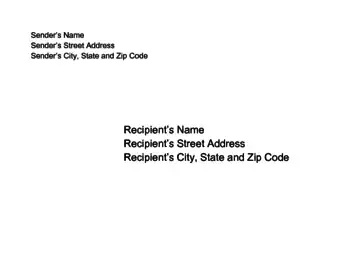



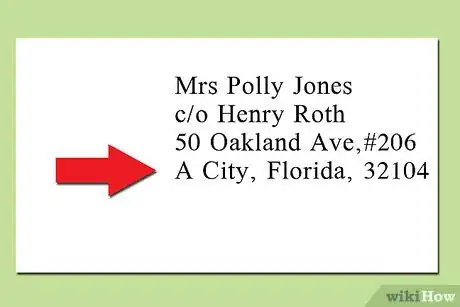











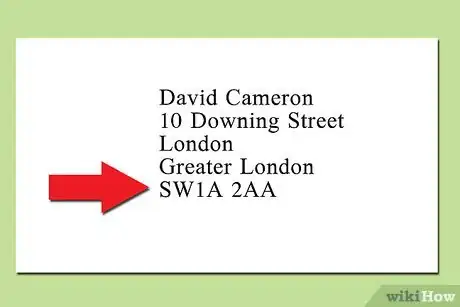
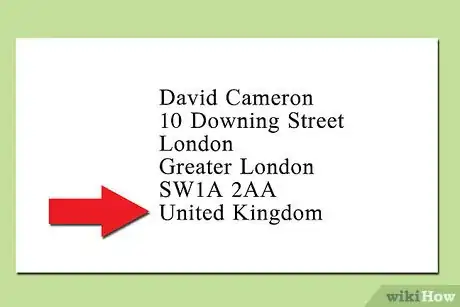
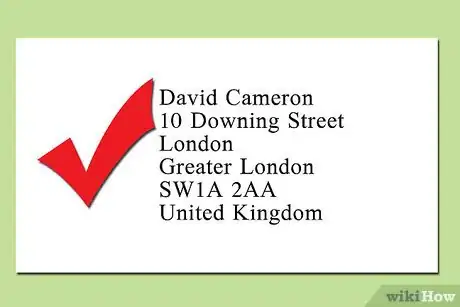







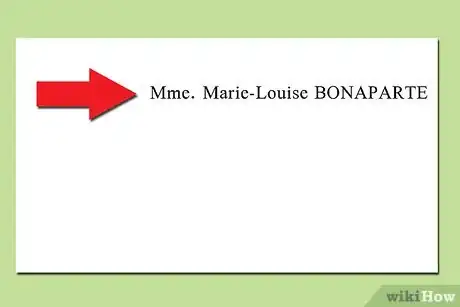




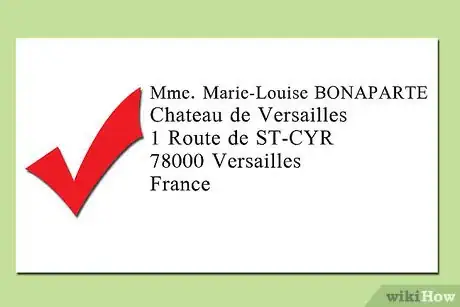




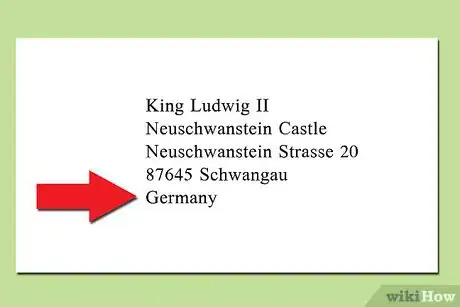


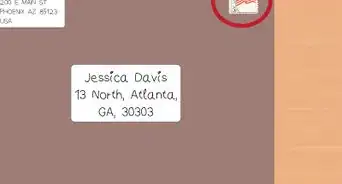
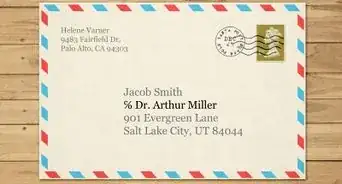



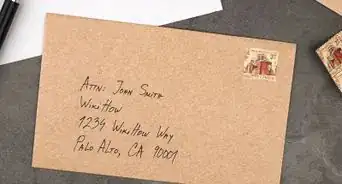
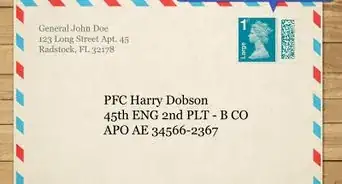
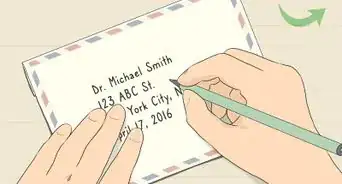
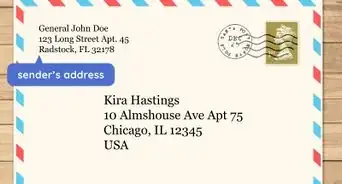
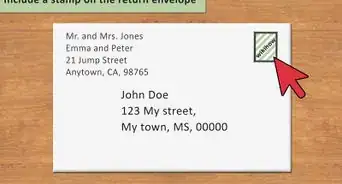
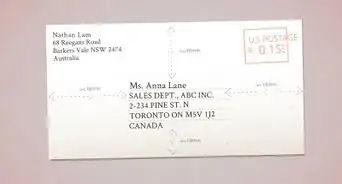
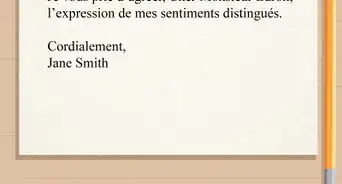
-Step-18-Version-3.webp)









